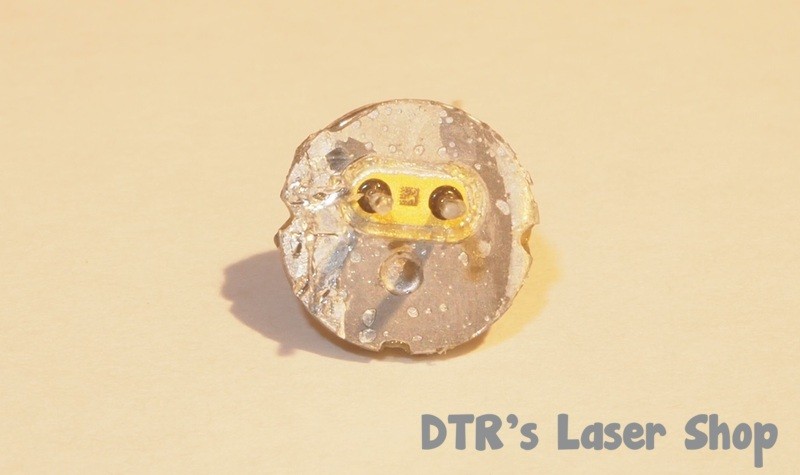Okay everybody here's what I learned. I chickened out on heating it. I didn't want to take the chance of killing every diode even though it probably wouldn't. So I just used a bench grinder and carefully removed the metal around the diode. It kept getting hot so I had a bag of ice to keep cooling it down. I ground it down enough to expose about 2/3 of the back of the diode and then I cracked it loose. The diode bank I had was NUBM06 445nm 8x bank. I wouldn't worry too much about the vibrations hurting it. At one point I got frustrated and took a hammer and chisel to it in attempt to Crack the block. It didn't work. Whatever alloy these things are cast from is very tough. It's hard and brittle. I used a pair of cutters to chop off chunks of the block. The main thing I think is be careful not to bend the frame of the diode. When I punched it out from the back it bent in and warped into a convex shape. It spread the posts and the bond wires must have been damaged.
So once you have about 2/3 of the diodes base exposed at that point it seems safe to punch it out without bending the frame.
As for this NUBM06 nichia it's a pretty good diode. I put about 4.5 amps to it and it is almost as good as the NUBM44. It is rated for 4 watts and the NUBM44 is rated for five. So it's definitely a pretty good buy. And if you manage to get all eight out without killing any it's a pretty good deal. Be aware though it's a open diode. I prefer the ones with cans, but this one is pretty good. If you are going to build a multi diode laser these would be a good choice. That's what I'm planning to do with these. 2 into 1 hand held. Should be pretty nice. I will be selling them on eBay or here once they let me. They said I didn't have enough posts yet to sell. But I have quite a few lasers for sale. All in Ehgemus hosts.
So in conclusion these banks are definitely worth buying however do expect to work for them. Unless someone out there wants to share techniques with the rest of us here. I guess we can just keep refining our methods and sharing our results.
So once you have about 2/3 of the diodes base exposed at that point it seems safe to punch it out without bending the frame.
As for this NUBM06 nichia it's a pretty good diode. I put about 4.5 amps to it and it is almost as good as the NUBM44. It is rated for 4 watts and the NUBM44 is rated for five. So it's definitely a pretty good buy. And if you manage to get all eight out without killing any it's a pretty good deal. Be aware though it's a open diode. I prefer the ones with cans, but this one is pretty good. If you are going to build a multi diode laser these would be a good choice. That's what I'm planning to do with these. 2 into 1 hand held. Should be pretty nice. I will be selling them on eBay or here once they let me. They said I didn't have enough posts yet to sell. But I have quite a few lasers for sale. All in Ehgemus hosts.
So in conclusion these banks are definitely worth buying however do expect to work for them. Unless someone out there wants to share techniques with the rest of us here. I guess we can just keep refining our methods and sharing our results.






